2023 Hyundai Ioniq 6 Review: Stylish, sporty electric economy

Pros: Fun, efficient driving; interesting design; useful tech; up to 361 miles of range
Cons: Tight rear head room; small trunk; no federal EV tax credit
Few electric cars are as striking as the Hyundai Ioniq 6, which is saying something considering today’s lineup of EVs. The new electric sedan uses its sleek looks both to get attention and for aerodynamics; so much so that it’s the most efficient of the Hyundai Group’s vehicles (also including Kia and Genesis). Add in sporty driving dynamics and a comfortable, stylish and practical interior, and it’s easy to recommend the Ioniq 6 to just about anyone.
While the Ioniq 6 itself is new, its underpinnings are familiar. It uses basically the same batteries and motors found in the Ioniq 5 and Kia EV6. That means entry-level models come standard with a single motor and rear-wheel drive, while a dual-motor, all-wheel-drive version is optional. The latter is certainly the most spunky and fun, but the former versions are the best for efficiency and range. The long-range SE model is capable of a remarkable 361 miles of range according to the EPA. That model also manages 140 mpg-e, topping every Tesla and matching some Lucids for sheer efficiency.
Still, as much as we like the Ioniq 6, there are a couple things to consider that could sway a buyer away. It is a conventional sedan, and between that and the sleek roofline, cargo space and rear seat headroom are tight compared to more SUV-like EVs, including the Ioniq 5, Kia EV6, Nissan Ariya, Tesla Model Y and others. Its sporty suspension tuning also yields a stiffer ride, whereas the aforementioned alternatives (apart from the Tesla) tend to be softer and more comfortable.
Interior & Technology | Passenger & Cargo Space | Performance & Fuel Economy
What it’s like to drive | Pricing & Trim Levels | Crash Ratings & Safety Features
What’s new for 2023?
The Ioniq 6 is an all-new model, though is closely related to the Hyundai Ioniq 5, Kia EV6 and Genesis GV60
What are the Ioniq 6’s interior and in-car technology like?
The Ioniq 6 interior looks at first less bold than the streamlined exterior, but look closer, and it reveals itself to be one of the most creative cabins on the market. Though certainly reminiscent of the Ioniq 5, there are all kinds of unique details. Translucent plastics are used on the dash and for the storage bins on the doors and center console. The doors themselves are bereft of switchgear both for a minimalist look and additional interior space (the window switches live on the center console, much like an old BMW). Interesting textures abound, particularly the ripples on the door panels and the dash. The ambient lighting adds to it, as well, with how it bounces off those same panels.
But function is just as present as form in the Ioniq 6. The dual 12.3-inch screens are bright, clear and responsive, while the infotainment interface is one of the easiest in the industry to use. The supporting touch-sensitive climate and infotainment menu “buttons” aren’t as friendly to use while driving than real buttons, but considering the Ioniq 6 competes with a car that does away with almost all physical controls, the Tesla Model 3, we’ll take it. That said, we’ll still point out our disappointment that the standard Apple CarPlay and Android Auto cannot be wirelessly connected. But at least unlike its siblings, the USB data port is positioned in the center console, instead of buried low under the dash.
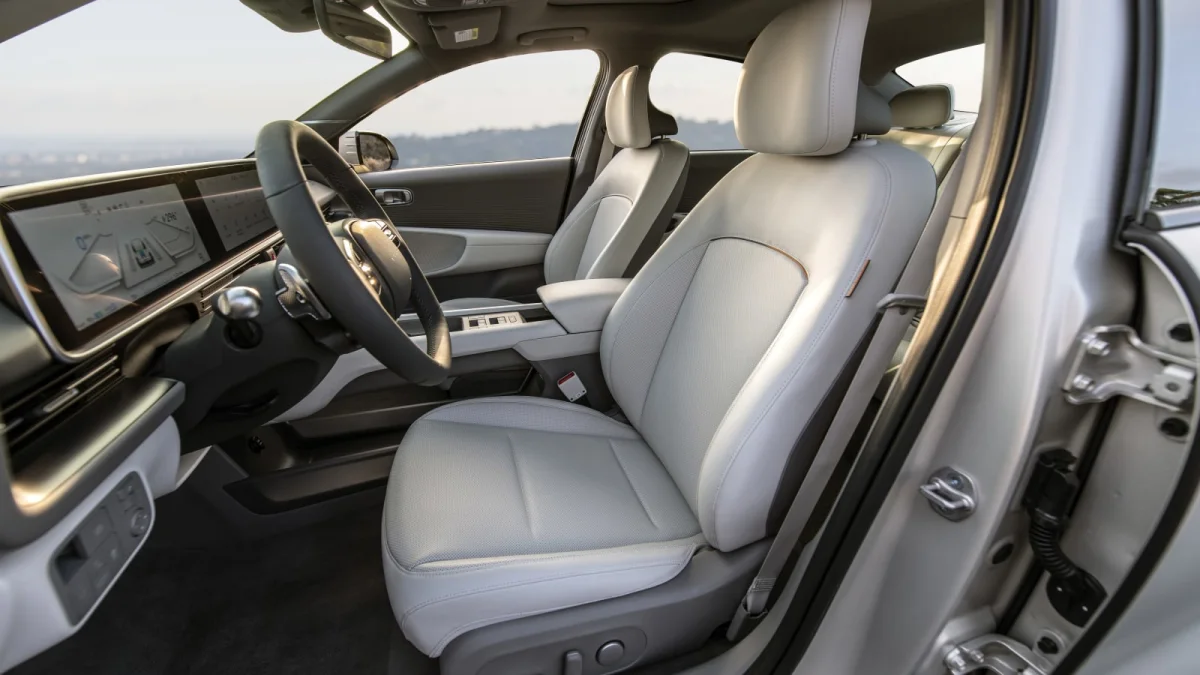
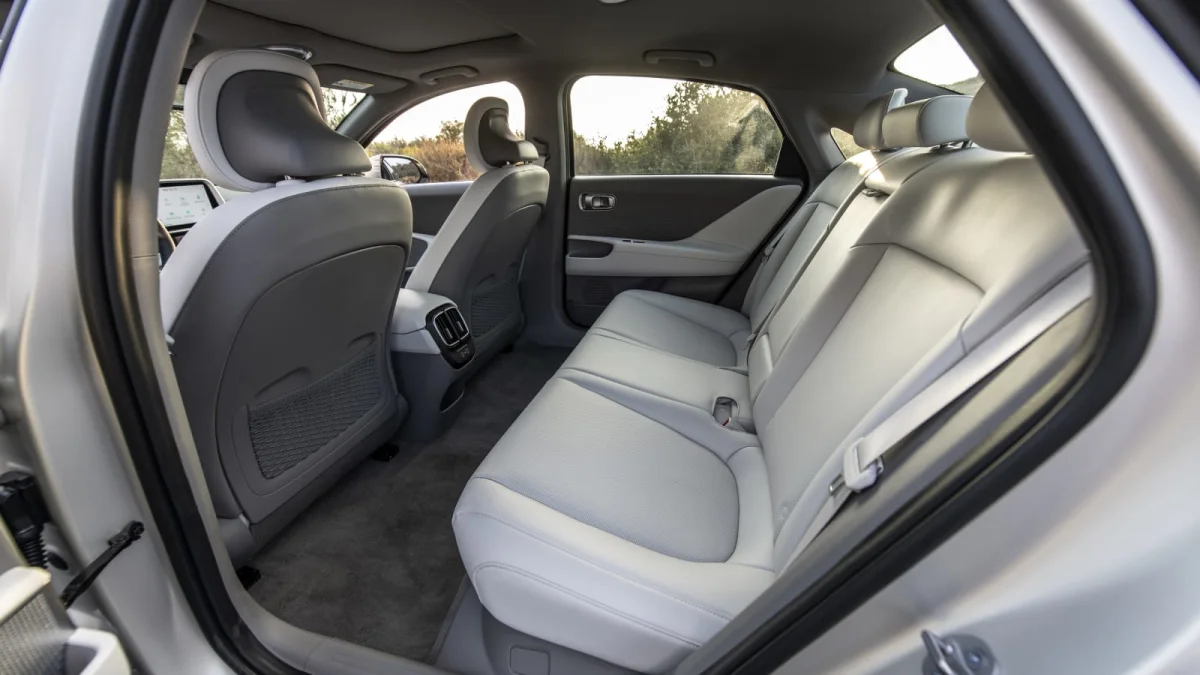
How big is the Ioniq 6?
Like the other E-GMP cars, the Ioniq 6 is deceptively large. The short overhangs and unusual proportions make it seem like a small vehicle, but it’s only a couple inches shorter than the Hyundai Sonata family sedan. The long wheelbase allows the interior to be particularly large, particularly in regards to leg room. Surprisingly, the hunkered-down shape of the Ioniq 6 doesn’t overtly compromise visibility, while headroom up front remains decent despite a seating position that is also fairly high. The seats are wide but a bit flat, and loads of adjustment makes it easy to find a comfortable seating position. Rear headroom in the back is a little tight, however, due to that distinct shape created for the sake of aerodynamic efficiency.
Also sacrificed to the altar of aero (and style) is cargo space. The Ioniq 6 is a true sedan with a trunk lid. That reduces the overall versatility and cargo space compared to its siblings and competitors that are mainly crossover SUVs. And while usable, it’s a bit small at 11.2 cubic fee, 16 cubes less than an Ioniq 5. But it’s on the small side even for sedans, as the similarly-sized, gas-powered Sonata has 16.3 cubic feet.
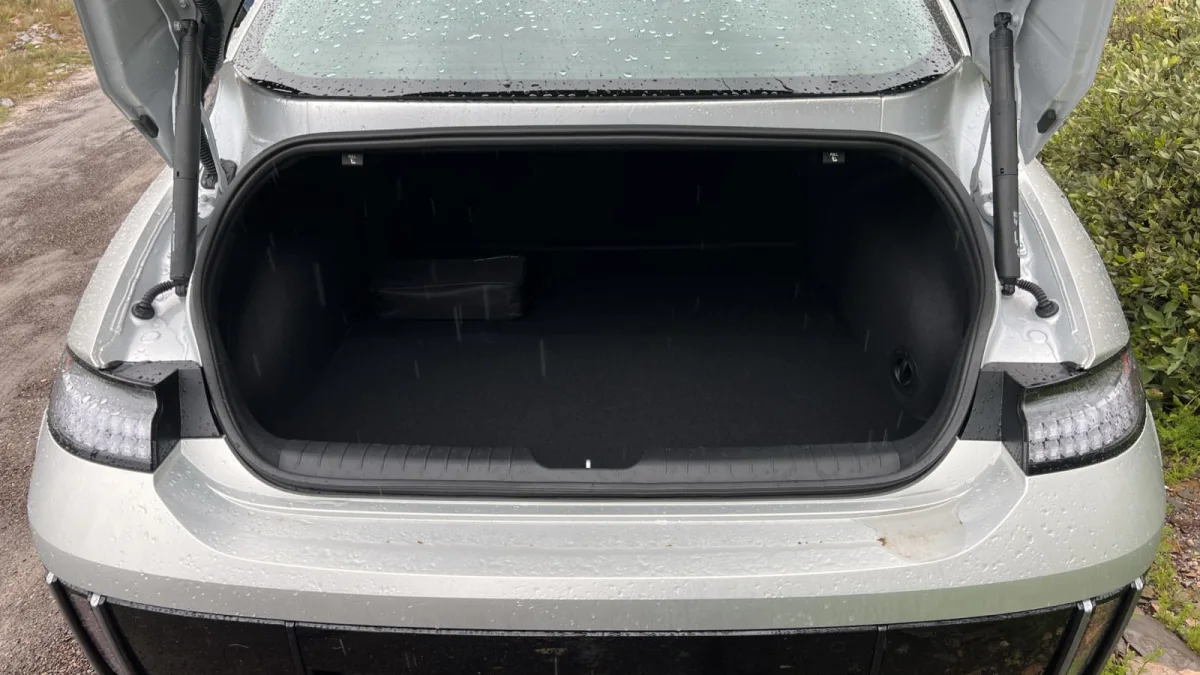
What are the Ioniq 6’s fuel economy and performance specs?
The Ioniq 6 has three powertrain options, two of which are single-motor, rear-drive setups, and the third with two motors and all wheel drive. One of those single-motor arrangements is exclusive to the SE Standard Range. It makes just 149 horsepower and 258 pound-feet of torque. It also gets the smallest battery, 53 kilowatt-hours, which returns an estimated range of 240 miles. It is quite efficient, coming in as the second-most frugal Ioniq 6 behind the long-range, rear-drive SE. Combined mpg-e is rated at 135.
Moving up to the other trim levels, the standard powertrain is the long-range, rear-drive option. It has a 77.4-kWh battery with higher output which allows for more horsepower from the rear motor: 225 horsepower. Torque remains the same at 258 pound-feet. That bigger battery offers better range, but the amount varies depending on the trim level. The SE has the best range at 361 miles, and that’s partly due to it being more efficient than the SEL and Limited. The SE with rear drive is actually the most efficient Ioniq 6 with 140 mpg-e combined. The SEL and Limited see their mpg-e numbers drop to 117 mpg-e combined. Range is 305 miles.
For comparison purposes, the most efficient Tesla Model 3 gets 132 mpg-e combined, and the most efficient Ioniq 5 gets 114 mpg-e.
Optionally available is the dual-motor, all-wheel-drive powertrain. With the addition of a front motor, power rises to 320 horses and torque to 446 pound-feet. Efficiency drops with the SE getting 121 mpg-e combined. Its range is 316 miles. The SEL and Limited get 103 mpg-e combined with a range of 270 miles.
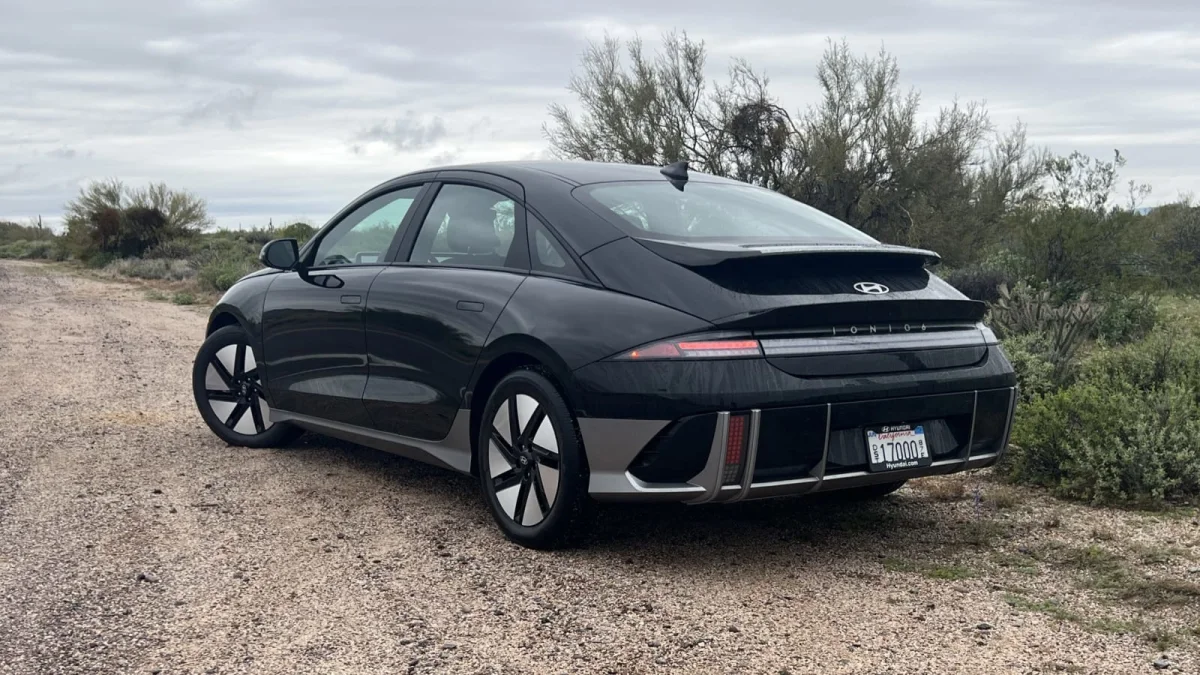
What’s the Ioniq 6 like to drive?
Interestingly, the Hyundai Ioniq 6 is the sportiest version of the E-GMP cars, apart from the high-performance Kia EV6 GT. The suspension is tuned stiffer, lending a much more responsive chassis with less body roll. The steering feels quicker and more accurate than its siblings, too.
The stiffer suspension does yield a correspondingly stiffer ride. If you’re looking for marshmallowy cruising, the others are better options. Still, we wouldn’t call the Ioniq 6 uncomfortable. It’s well controlled, even if you feel more bumps.
And of course, you get the same gutsy motors as other E-GMP models. Being either rear-drive or rear-drive-biased, depending on the motor configuration, is sure to delight enthusiasts, especially as you can feel it with generous prods of the accelerator. The 320 horsepower of the dual-motor model is particularly exhilarating, even if it does start to wane at higher speeds.
Also worth noting is that the Ioniq 6 has full one-pedal driving available. The regenerative braking force can be adjusted via the steering paddles, and at maximum, it can bring the car to a full stop. It’s easily controllable, and the brake pedal feel and position remains consistent. The Ioniq 6 also has different brake light programming than other Hyundai Motor Group vehicles, meaning the light illuminates sooner and longer than those models.
What other Hyundai Ioniq 6 reviews can I read?
2023 Hyundai Ioniq 6 First Drive Review: Slippery sedan adds big range
Our first drive of the Hyundai Ioniq 6 reveals it’s not just the most efficient E-GMP car, but one of the more fun ones.
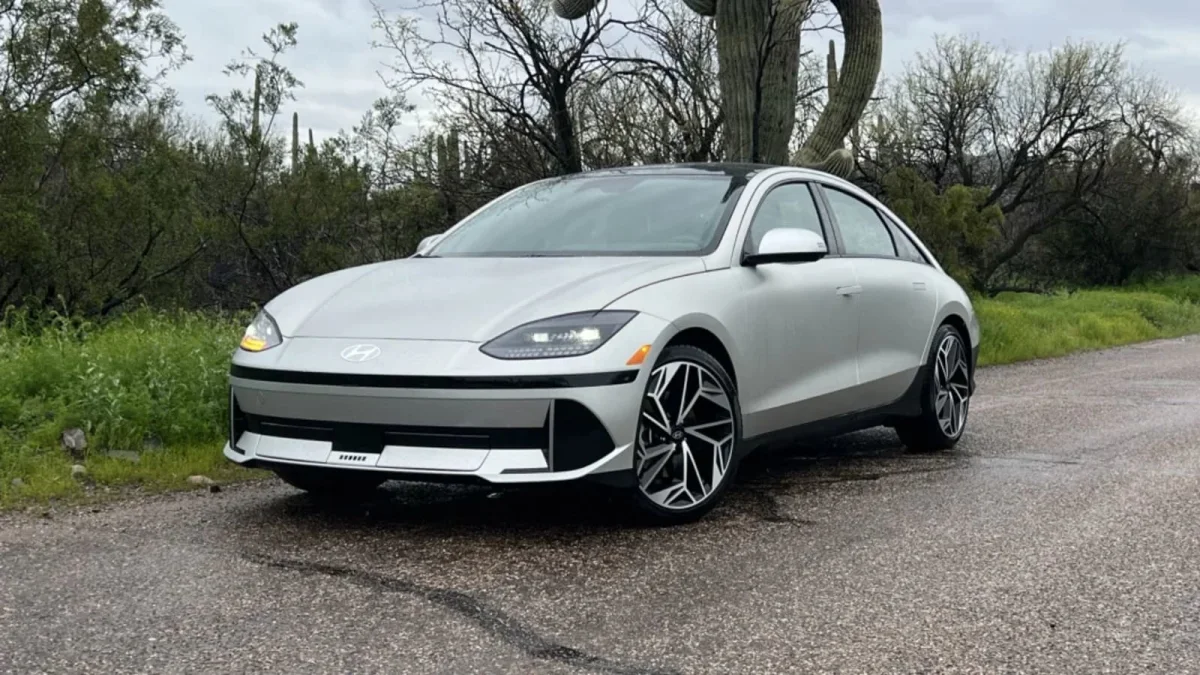
What is the 2023 Ioniq 6’s price?
The base Ioniq 6 SE Standard Range starts at $42,715. This model comes with a smaller battery with less range and a single motor with less power than other rear-drive Ioniq 6 models, and of course the lowest price. But it’s still quite well-equipped. It comes with full LED lighting, 18-inch alloy wheels, flush-fitting door handles, heated mirrors and power trunk lid on the outside. Inside it gets dual 12.3-inch screens for instruments and infotainment, power driver seat, heated front seats, leather-wrapped steering wheel, dual-zone automatic climate control, satellite radio and navigation.
Higher trim levels get a bigger battery and more powerful standard rear motor. They’re also available with all-wheel drive via dual electric motors that increase power. All-wheel drive is a $3,500 option on all these trims. And noteworthy features available either standard or optional on these higher trims include larger wheels, sunroof, faux leather upholstery, seat ventilation, power passenger seat, heated steering wheel, wireless device charging, upgraded sound system, ambient lighting and vehicle-to-load power for appliances and devices. The top-level Limited also has the ability to be remotely moved fore and aft into tight parking spaces.
SE Standard Range: $42,715
SE: $46,615
SEL: $48,815
Limited: $53,715
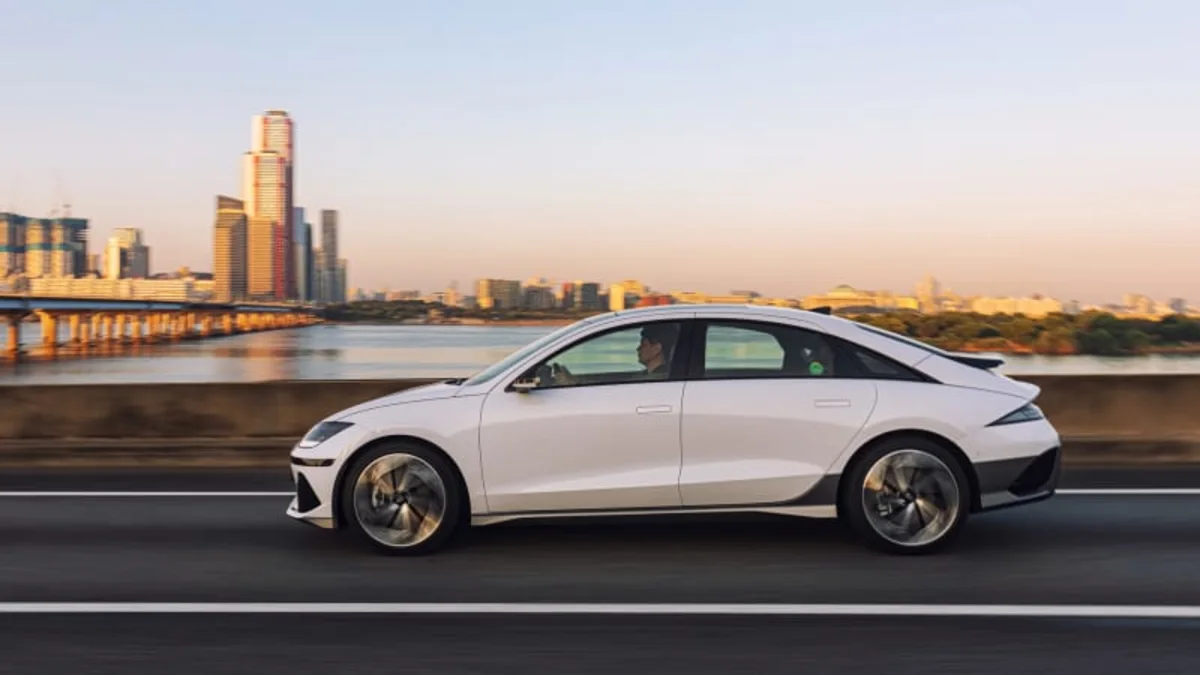
What are the Ioniq 6’s safety ratings and driver assistance features?
The Ioniq 6 comes standard with automatic headlights, adaptive cruise control, automatic emergency braking, rear cross-traffic alert with automatic braking, parking sensors, blind-spot monitoring, lane-keep assist, rear occupant alert and driver attention warning. There’s only a handful of upgrades available on higher trims, such as surround-view cameras, automatic wipers and automatic emergency braking with cyclist, pedestrian and intersection detection.
Besides simply having all these driver assistance features, it’s important to note how well-executed they are. The SE models come with Highway Drive Assist I (HDA I) as standard, and the SEL and above have HDA II. Both systems have impressed us with good lane tracking. The latter, also available on Genesis models, is just as good, but has additional functionality, allowing the car to make automated lane-changes and can adjust speed for corners using GPS information.
As of this story’s publishing, the Ioniq 6 has not been independently crash tested.
Related video:




